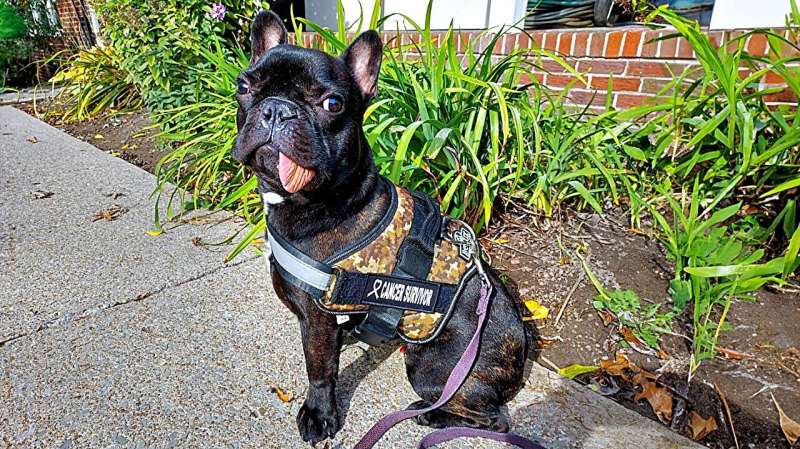February 3, 2024 report
This article has been reviewed according to Science X's editorial process and policies. Editors have highlighted the following attributes while ensuring the content's credibility:
fact-checked
trusted source
proofread
Saturday Citations: A dog regenerates a body part that may surprise you; plus microbes, neurons and climate change

Coming in hot on February 3 with a photo of a cute French bully who did an amazing trick with his jawbone. Good boy! (Click!) Happy Saturday. Here's a roundup that includes news about additive printing of neurons, evidence that microbes like stuff, and the shifting temperature differential between day and night.
Puppy notable
A study in Frontiers in Veterinary Science titled "Good Boy Grows New Jawbone," then impressively retitled "Spontaneous mandibular body regeneration following unilateral subtotal mandibulectomy in a 3-month-old French bulldog," documents a cute puppy's spontaneous regrowth of his lower left mandible after surgical removal due to cancer.
The dog's owners originally presented Tyson to Cornell's Dentistry and Oral Surgery Service to correct his cleft palate when the vets detected cancer. Though mandibular removal is a severe treatment, they determined that because Tyson showed no evidence of metastasis, he had the possibility of leading a full life.
Surprisingly, in the ensuing weeks, Tyson spontaneously regenerated his lower left jawbone, though the new bone has no teeth and is missing other features. The vets attribute the regeneration partially to the amount of periosteum preserved during surgery; the tissue contains blood vessels and nerves that support the growth of the original mandible. I have a gigantic hound puppy, and I'm trying and failing to imagine containing abundant puppy energy in an E-collar over an extended period of months while he Deadpools his face back together.
Brain extruded
Researchers at the University of Wisconsin-Madison have developed the first 3D-printed brain tissue, presumably in a re-enactment of the "Westworld" opening credits. The 3D-printed tissue is functionally identical to natural brain tissue, and the accomplishment could have applications in neuroscience and stem cell biology.
Traditionally, 3D printing stacks layers of substrate vertically, which inhibited previous attempts by other research groups. In this project, the layers were printed horizontally using a softer bio-ink gel than previous efforts. In a nutrient growth medium, individual neurons were able to grow into each other and communicate via signals, interact with neurotransmitters and form networks.
Unlike existing techniques used to produce brain organoids used for brain research, this technique offers precision and control. Additionally, it does not require specialized equipment or methods and can therefore be adopted immediately by other research labs.
Microbes discerning
If you've ever felt an irresistible attraction to large, complex polysaccharides, check yourself for cilia—you might be a marine bacterium. Using technology developed to advance environmental remediation, researchers at ETH Zurich report that bacteria can recognize small food molecules and swim toward large, complex polymers.
Previously, researchers had believed that bacteria were blind to polymers and attracted to diffusible substances like sugar. They used a microfluidic chip containing small chambers to determine that marine bacteria follow the concentration gradient of a phytoplankton-derived polymer called laminarin. With the new insight that bacteria have a more complex sensorium than previously believed, the researchers are now exploring whether they recognize other complex substances.
Atmosphere complicated
Through the 1990s, temperature increases between night and day were asymmetric, with greater nighttime warming prevailing. Researchers at Chalmers University of Technology now report that the trend, which was first documented in the 1950s, has reversed, with greater daytime warming; the researchers say this notable temperature differential could affect all life on Earth.
They suggest that this shift is being caused by global brightening, the result of reduced cloud cover, allowing more sunlight to reach the Earth's surface. Due to the complexity of atmospheric dynamics and how they might be affected by factors including sunlight, aerosols and rising atmospheric carbon, it's still unclear why cloud cover has diminished. Additionally, heat waves and regional droughts may have weakened the cooling effects of evaporation under sunlight. Earth science, it's complicated.
© 2024 Science X Network





















